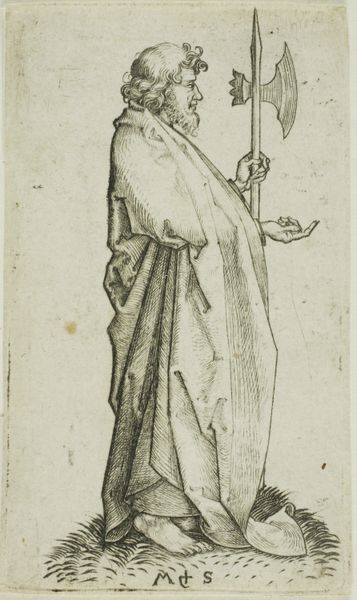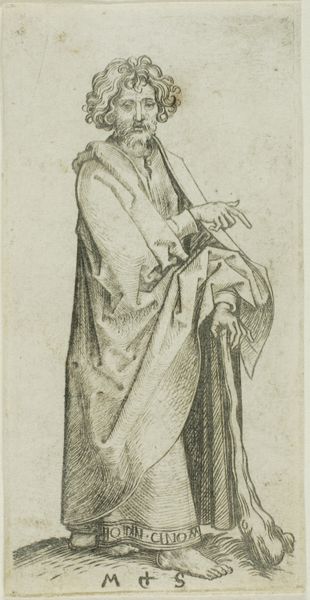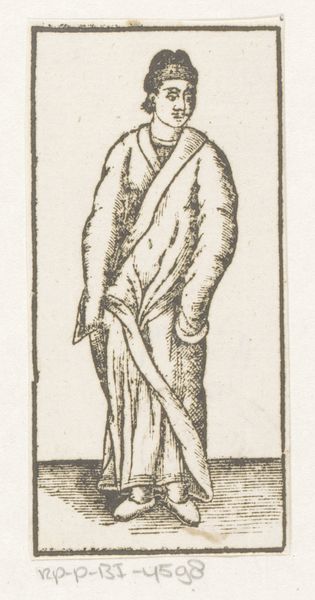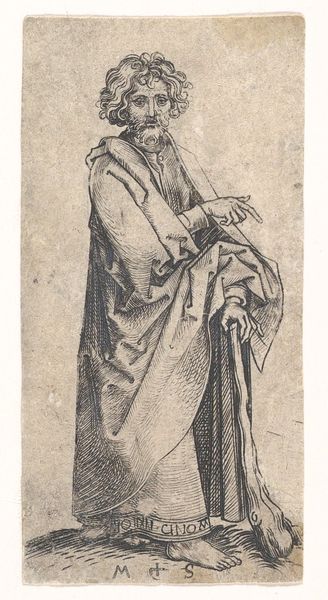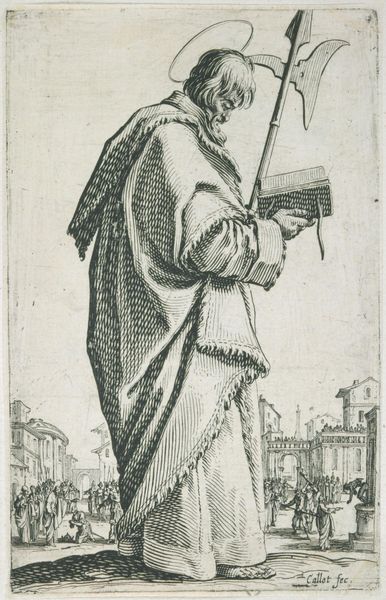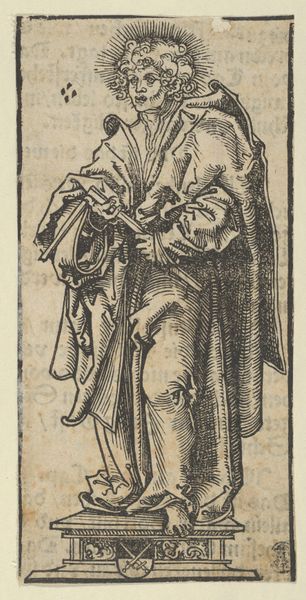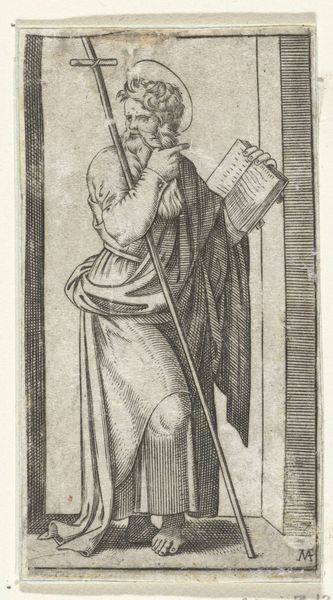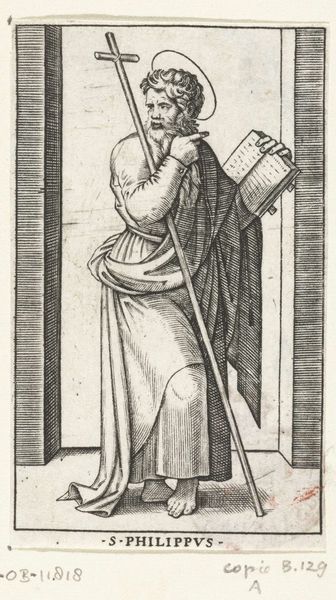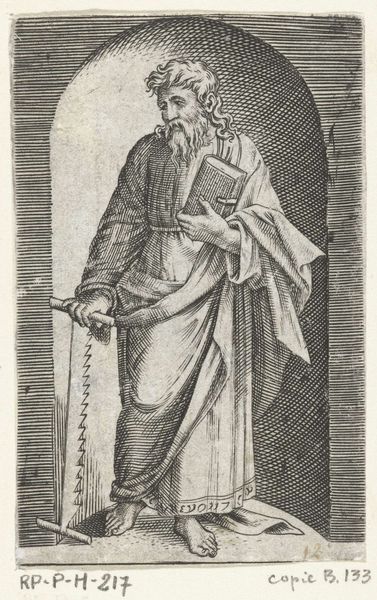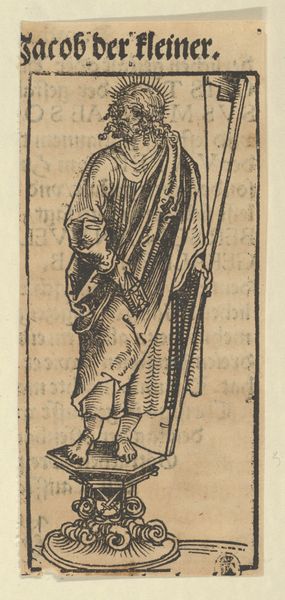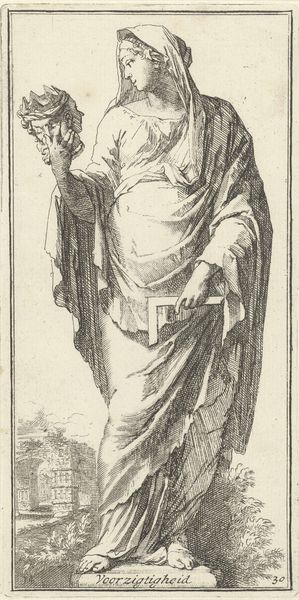
drawing, ink, pen
#
portrait
#
drawing
#
mannerism
#
figuration
#
ink
#
pen
Dimensions: height 82 mm, width 42 mm
Copyright: Rijks Museum: Open Domain
Curator: Here we have "Old Man in a Long Robe," a pen and ink drawing by Adam Elsheimer, dating from between 1588 and 1610. What strikes you most about it? Editor: The immediate sense is of fragility. He’s leaning so heavily on that staff, enveloped by the drapery, almost disappearing into it. A melancholy figure. Curator: Yes, Elsheimer captures a poignant moment of quiet introspection, but let's consider the material context. The use of pen and ink was common for preparatory sketches, offering an immediacy and allowing for quick revisions. This wasn’t necessarily meant as a finished work in the way we perceive it today. Editor: Precisely! The use of ink contributes to the mood; it gives the lines definition, yet allows them to also seem like they’re fading into the page. Think about the symbolic weight of the robe itself – signifying wisdom, perhaps, or societal role – in contrast to the vulnerability implied by his posture. It’s an interesting dichotomy. Curator: I find it intriguing how the relative affordability of ink and paper impacted artistic accessibility. Unlike large-scale oil paintings commissioned by the elite, drawings like this provided a means for artists to explore ideas, develop techniques, and even produce works for a burgeoning middle-class market. Did that expanded production in any way democratize the visual language conveyed? Editor: It definitely allowed a broader reach, giving wider circulation to particular iconographies of aging and authority. But what truly resonates is that this representation becomes a kind of timeless, universal image. It's both of its period and entirely beyond it, focusing on enduring human experiences. Curator: Thinking about the ink, it also allowed a level of precision not afforded to larger scale art – a refinement, maybe? Editor: Right. He's an individual and an archetype simultaneously. This exploration leaves me contemplative, how societal burdens wear on even those we imagine as figures of power or resilience. Curator: Indeed. By considering both the means of production and the visual symbolism, we can appreciate Elsheimer's "Old Man" as more than just a study of a figure; it's a lens through which we can examine ideas about social structures and mortality, mirrored back through art history.
Comments
No comments
Be the first to comment and join the conversation on the ultimate creative platform.
